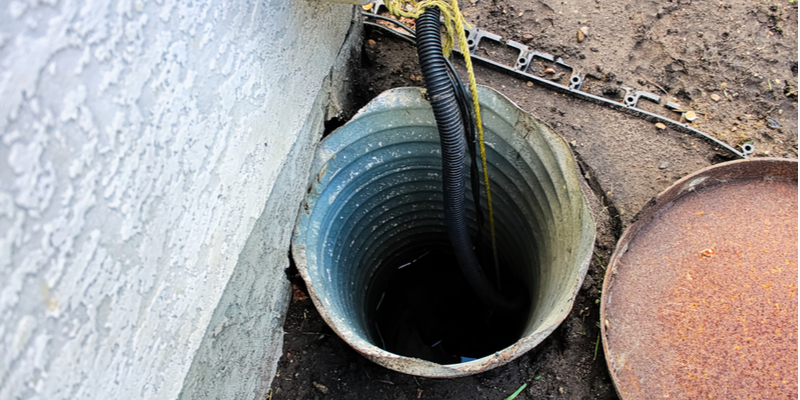What're your thoughts concerning How to Care for Your Sump Pump?

Sump pumps are essential parts in numerous homes, especially in areas prone to flooding or extreme wetness. They aid avoid water damages by effectively removing excess water from cellars or crawl spaces. Nevertheless, like any other device, sump pumps require routine upkeep to ensure they function efficiently when required one of the most. Cleansing your sump pump is an essential part of its upkeep, and recognizing just how to do it appropriately can save you from pricey repairs and possible calamities.
Introduction
Maintaining a clean sump pump is essential for its proper performance and longevity. Neglecting this important job can result in blockages, breakdowns, and ultimately, water damages to your building. As a result, finding out exactly how to clean up a sump pump is vital for house owners that rely upon these gadgets to maintain their basements dry and protected.
Understanding the Sump Pump
Before diving right into the cleaning process, it's important to have a standard understanding of exactly how a sump pump works. Commonly mounted in a pit or basin listed below the basement flooring, a sump pump consists of several vital elements, including a pump, a float switch, and a discharge pipe. When water builds up in the pit, the float button turns on the pump, which after that pumps the water out with the discharge pipe, far from the building's structure.
Signs of a Dirty Sump Pump
Recognizing when your sump pump needs cleansing is essential for stopping potential malfunctions. Some usual indicators that suggest a filthy sump pump include odd sounds throughout operation, decreased water flow, and visible particles in the pit. If you see any of these symptoms, it's important to clean your sump pump immediately to avoid any further concerns.
Getting ready for Cleansing
Before you begin cleaning your sump pump, it's vital to take some safety precautions. Start by shutting down the power to the pump to avoid any electric crashes. In addition, wear proper safety gear, such as handwear covers and goggles, to secure yourself from dust, debris, and prospective virus.
Step-by-step Overview to Cleansing a Sump Pump
Turning off the Power
Begin by detaching the power supply to the sump pump to prevent any mishaps while cleansing.
Removing Debris and Dust
Make use of a container or a scoop to remove any visible particles, dirt, or debris from the sump pit. Dispose of the particles effectively to stop it from blocking the pump or the discharge pipe.
Cleansing the Pump and Drift Switch Over
As soon as the pit is clear of debris, carefully remove the pump from the pit. Evaluate the pump and the float button for any kind of indications of damage or wear. Make use of a soft brush or fabric to clean up the surfaces and eliminate any collected grime.
Purging the System
After cleaning the pump and float button, flush the sump pit with clean water to eliminate any continuing to be dirt or debris. This will help make certain that the pump runs smoothly and efficiently.
Looking For Appropriate Functioning
Before reinstalling the pump, carry out a fast test to ensure that the float switch triggers the pump correctly. Pour some water into the sump pit and observe the pump's operation. If everything is working correctly, you can reconstruct the pump and reconnect the power supply.
Upkeep Tips to Keep Your Sump Pump Clean
Along with routine cleansing, there are numerous maintenance suggestions you can comply with to keep your sump pump in optimum problem:
Conclusion
Cleansing your sump pump is a critical facet of its maintenance and makes certain that it operates properly when you require it the most. By complying with the steps detailed in this overview and integrating normal upkeep right into your regimen, you can prolong the life-span of your sump pump and secure your home from water damages.
How To Inspect And Clean A Sump Pump
There are a few things you may want to look for when inspecting your sump pump. These include:
Leaks: If you notice any leaks around the sump pump, it likely needs to be repaired or replaced. Mud or Water: If there is any mud or water around the sump pump, it’s likely that it’s not working properly and needs to be cleaned. Noises: If you hear any strange noises coming from the sump pump, it may be indicative of a problem. Next, you’ll need to clean the sump pump. If you notice any of these issues, it’s best to clean the sump pump as soon as possible. To do this, you’ll need to remove the pump from its housing. Be sure to have a bucket handy to catch any water that may spill out. Once the pump is removed, use a brush or a spray nozzle to clean off all of the mud and debris. You may also want to check the impeller for damage or wear and tear. If you find any damage, you’ll need to replace the pump.
Once the pump is clean, reattach it to its housing and replace any parts that were removed. Be sure to test the pump before putting everything back in place. Once everything is back in order, put the cover back on the sump pit and refill it with water.
https://elekplumbing.com/blog/how-to-inspect-and-clean-a-sump-pump/

Hopefully you enjoyed our article about . Thanks a lot for finding the time to read through our post. Are you aware of somebody who is fascinated about the subject? Why not promote it. I praise you for being here. Kindly check up our blog back soon.
Call Today